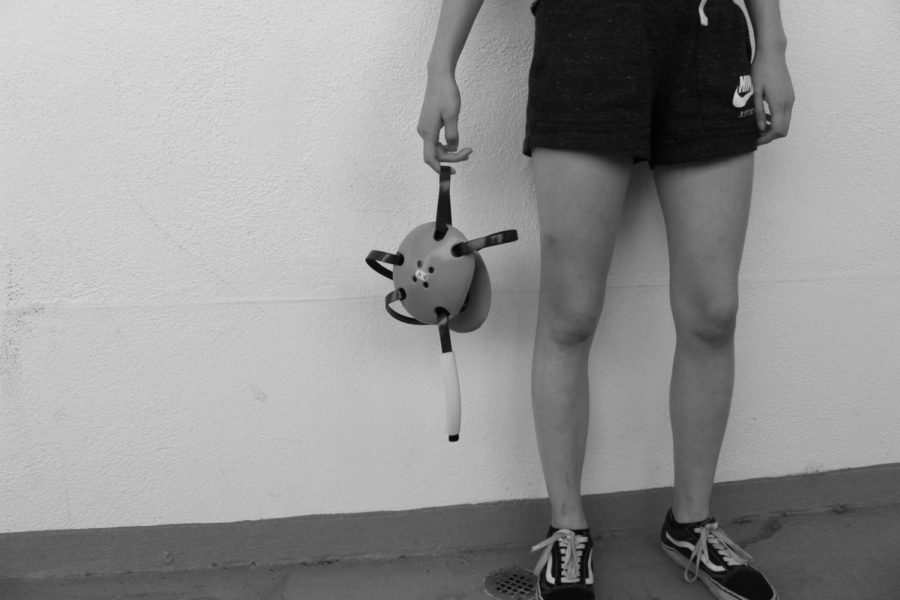Wrestling: A Personal Perspective
November 12, 2019
What is the first thing that comes to mind when a person hears the word wrestling? For some, it may be the image of John Cena body slamming some poor fellow to the soul-shaking sound of trumpets. For others, it conjures cringeworthy mental images of grown men engaged in the most aggressive cuddling session of their lives. For the rest, it’s Mexican Jack Black in his underwear. For me and other wrestlers, the word wrestling holds greater significance. It encompasses a beautiful world of pain, unyielding tenacity and personal discovery.
Wrestling is one of the oldest sports in existence — its legacy tracing back a mind-boggling 15,000 years to the lost worlds of ancient Egypt and Babylon. Cave paintings from these societies depict wrestling and much of the technique that is used to this day. The sport has mentions in the Iliad, the Vedas and the Bible. In the world of antiquity it was idolized, with it being a key sport in the original Olympics (fun fact: these Olympians competed completely naked — making the ridiculously revealing singlets of today an upgrade).
Wrestling’s history gives it a thick air of irony today. Despite having arguably the richest history of any other sport, it has managed to fall into odd reputation and relative obscurity. All are familiar with Dwayne “The Rock” Johnson’s grandiose stage presence and his glorious “People’s Elbow.” However, the same people scratch their heads when presented with the iconic Jason Nolf “Winn Dixie” roll or the Yianni “Sit-the-Corner.” And this is the divide between the two worlds of wrestling. The latter moves are a part of sport wrestling, the form closest to the game of the ancient Olympics. However, most people are familiar with professional wrestling, a high-strung display of blinding personalities, stunts and predetermined outcomes. People consistently flock to this world of flashy outfits and chair-smashing over the gritty, sweat-stained reality of sport wrestling. And this is a shame, as sport wrestling is one of the most electrifying spectacles ever created.
The sport’s goal is simple enough: get your opponent on his or her back. However, the manner in which this is achieved is anything but simple. When the referee’s whistle blows, the room is instantly transformed into a battleground. What ensues is a furious struggle for dominance — each wrestler lunging and scrambling for the advantageous position. All this occurs while in wrestling stance — an excruciating position akin to an intense duck waddle. Double leg takedowns, headlocks and lat drops are just the very tip of the iceberg. There is a seemingly endless stream of moves designed to discombobulate, exhaust and ultimately outwork the opponent.
It is a ballroom dance — one of precision, power and grace. A Pali wrestler likely would vigorously resist comparison to a dancer — yet the two are almost one and the same. Just as a dancer feels their partner’s next step, wrestlers anticipate and react to their opponents’ every movement. From this tension-filled embrace, each relies on split-second intuition and muscle memory to fire and fend off attacks. Far from an isolated collection of lunges, grabs and throws, wrestling constitutes a symphony of muscular coordination and instantaneous decision-making.
In my eyes, this dance is the ultimate liberation from the abstract realities of the classroom. While I wrestle, words, equations and lectures of the day fall forgotten on the sweat-sheened mat. Regrets and frustrations are purged through the pleasant agony of drilling and conditioning. I find myself leaving the room feeling entirely refreshed, despite my comically bedraggled appearance.
When I spill of my unrelenting passion for the sport, I am consistently met with perplexed gazes followed by the usual, “you-go-girl” sentiment. In the eyes of many, my gender and willowy body stands in stark contrast to commonly held views of wrestling. Lanky and awkward, my body seems tailor-made for Jack Skellington cosplay — not a sport centered around raw power and agility. Despite these facts, I find myself completely at home within the blue walls of the wrestling room. In there, I am another sweaty body among the throng. Gender is irrelevant in this communal environment of shared pain in pursuit of self-improvement.
In wrestling, I have discovered an ability to persevere through trying situations. The very nature of the sport requires unceasing resilience and optimism, which are qualities that I, up until now, never attributed to myself. A year ago, if I had been made aware of all the endless sickly green bruises, muscle strains and skin infections I would sustain as a result of wrestling, I would have turned tail and run. Each day I add a layer to the fabric of what I know possible — each day I push my body to new limits. A year of wrestling has sparked a profound revelation in me: I am capable of more than I could ever fathom.
Out of the dozens of times I get my face smashed, out of the dozen times I get the air pressed out of me, there may be just one instance where I get a pin. And that feeling is the blinding, mind-consuming ecstasy of wrestling. Wrestlers endure hours of drilling, cartilage destruction and weird-looking ears, all to get to that second of euphoria — that singular victory that is all your own.
The endless pursuit of this feeling is fixed in the mind of every wrestler. In the end however, wrestlers are defined by personal growth, not the number of pins they garner. Wrestling is a sport of dynamism and change; no person remains static within it. The mental and physical metamorphosis that occurs during this sport remains ingrained in athletes inside and outside the wrestling room, a constant reminder of the potential in persistence. Its authenticity and rawness is a transformative force, allowing each wrestler to discover how to suffer gladly and win proudly.
The television gimmicks of today are but surface-level emulations of this very real experience, scraping only superficial significance from its parent. Despite pro-wrestling being considered a performing art, sport wrestling is an art form itself, with intricacy and poise woven throughout each move. As the limelight remains fixed on its copycat counterpart, sport wrestling’s thousand year legacy is kept alive within the hearts of the passionate few who devote themselves to its future.












